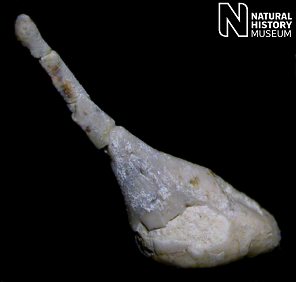 A A |
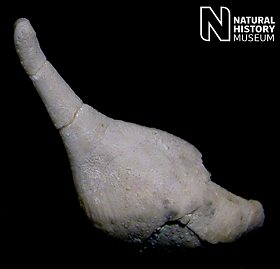 B B |
|
Hagenowia (Duncan) |
These small but distinctive echinoids are easily recognised by the pronounced rostrum developed at the front of the animal. The anterior ambulacrum runs vertically down the front of the rostrum and the apical plates are spilt between the tip of the rostrum and its base. The different species are distinguished by their profile, and relative size and orientation of the rostrum. All possess very fragile shells and are rarely found uncrushed and complete. Most are scarce, except Hagenowia anterior which is common in the Early Santonian of Yorkshire.
 A A |
 B B |
1). Hagenowia anterior; two tests viewed laterally (from the side) with the anterior (front) to the left. H. anterior is defined by its elongate and forward sloping rostrum (both x3.6, Lower Flamborough Chalk, Upper Micraster coranguinum zone, South Landing, Flamborough Head, Yorkshire, BMNH (British Museum (Natural History) London) EE6776. Images © 2005 The Natural History Museum, by kind permission.
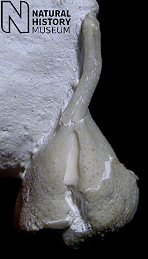 A A |
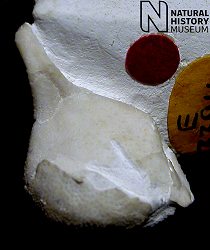 B B |
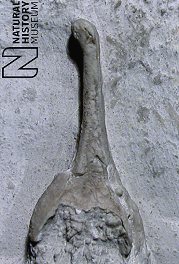 C
C |
2). (A)(B) Hagenowia blackmorei; near complete test viewed (A) from the front and (B) from the side. H. blackmorei is distinguished from H. anterior by its more vertical, periscope-like rostrum and by its swollen anterior profile at the base of the rostrum (bottom-left of (B)). From a practical point of view, H. blackmorei is restricted to the Campanian whilst H. anterior is most common in the Santonian. (A)(B) x3.5, Campanian, East Harnham, near Salisbury, Wiltshire, Blackmore Collection, BMNH (British Museum (Natural History) London) E33911. (C) Hagenowia cf. anterior, x2.8, Dixon Collection, BMNH 30826. Images © 2005 The Natural History Museum, by kind permission.
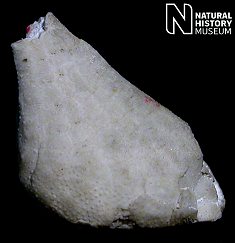 A A |
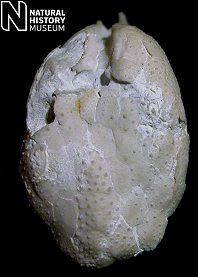 B B |
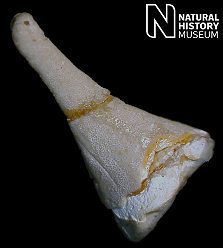 C C |
3). Hagenowia rostrata; (A) Side view of test lacking rostrum, x3.0; (B) Underside, x3.2; (C) Side view of a rostrum, x3.2. This form from the Late Coniacian and santonian is distinguished by its robust and relatively short rostrum, often very forward inclined. (A)(B), North Foreland, near Broadstairs, Kent, Gale Collection, BMNH (British Museum (Natural History) London) E76848; (C) Dixon Collection, BMNH 30826. Images © 2005 The Natural History Museum, by kind permission.
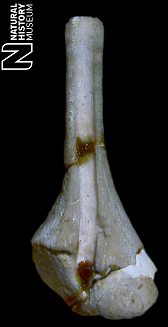 A A |
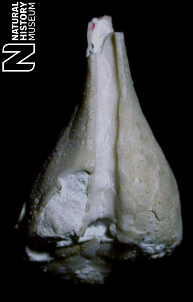 B B |
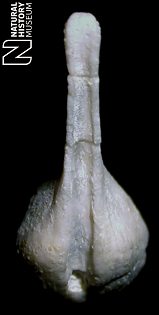 C C |
4). Tests viewed from the front showing how the elongate anterior ambulacrum funnels down the rostrum and into the peristome at the base; (A) x3.9, H. rostrata, Kent, Dixon collection, BMNH (British Museum (Natural History) London) 30826; (B) x2.5, H. rostrata, Seaford Chalk, North Foreland, near Broadstairs, Kent, Gale Collection, BMNH E76848; (C) x4.0, H. anterior, Lower Flamborough Chalk, Upper Micraster coranguinum zone, South Landing, Flamborough Head, Yorkshire, BMNH EE6776. Images © 2005 The Natural History Museum, by kind permission.